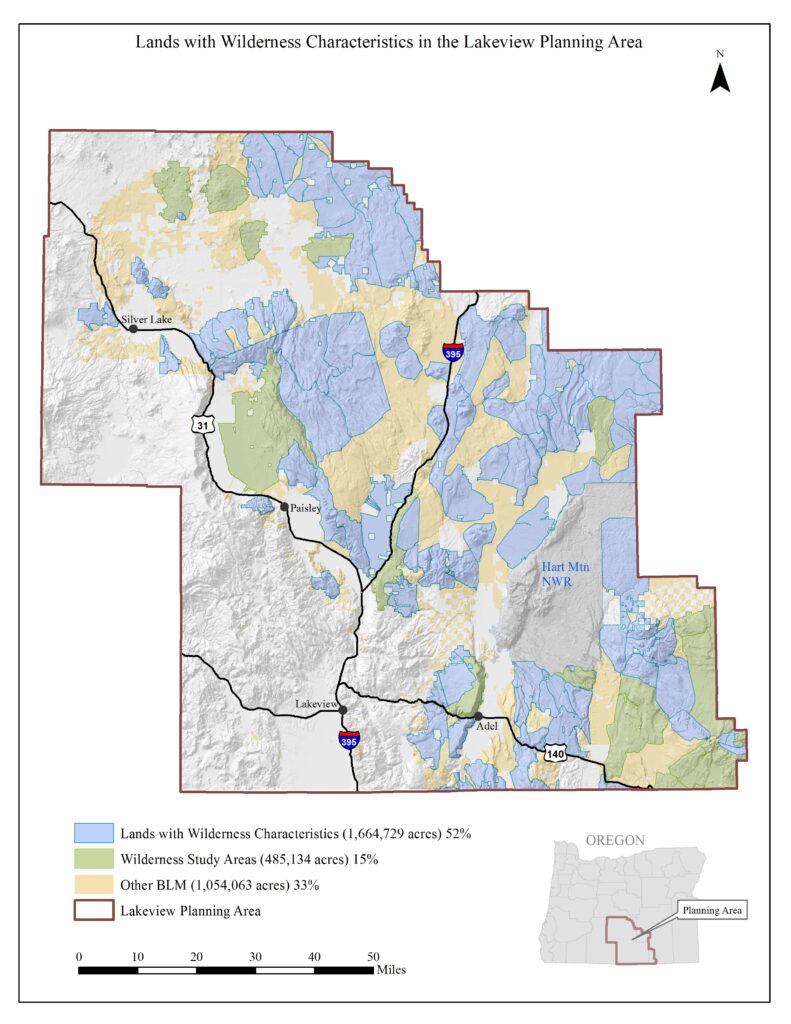Lands with Wilderness Characteristics
Alan Majchrowicz Website
The Scope:
The Lakeview Resource Management Plan (RMP) will establish how the Bureau of Land Management (BLM) will manage and conserve wilderness values on public lands formally recognized as “Lands with Wilderness Characteristics” (LWC). The BLM may also consider elevating certain LWCs to Wilderness Study Areas as authorized by Section 202 of the Federal Land Management and Policy Act.
What are LWCs?
Lands with Wilderness Characteristics are areas that have been inventoried and found to meet Congress’s definition of “wilderness” from the Wilderness Act of 1964. However, LWCs are not automatically protected like wilderness or Wilderness Study Areas. Instead, these areas are identified in planning — such as in the Lakeview RMP — where the agency may propose management to conserve wilderness values for potential future designation as wilderness by Congress.
What characteristics define wilderness?
According to the Wilderness Act, wilderness quality lands must possess:
- Sufficient Size – generally 5,000 acres or larger, but this can be smaller if the area is adjacent to an existing Wilderness Study Area or wilderness area.
- Naturalness – affected primarily by the forces of nature.
- Solitude and/or Primitive and Unconfined Recreation – outstanding opportunities for either solitude or primitive and unconfined recreation exist.
- Supplemental Values – features of ecological, geological, historical, scientific, educational, or scenic value. (Note: this is not required to exist for recognition as wilderness-quality lands.)
What protection is afforded to wilderness values in LWCs?
Unlike Wilderness or Wilderness Study Areas, the BLM is not necessarily required by the Wilderness Act or other laws to preserve wilderness values in LWCs. However, the BLM can choose to manage LWCs to retain their wilderness values through a resource management plan.
What are Section 202 WSAs?
There are two methods by which Wilderness Study Areas can be designated: through the Congressionally directed wilderness inventory under Section 603 of the Federal Land Management and Policy Act (FLPMA) or by the BLM through land use planning, such as an RMP, conducted under Section 202 of FLPMA. Almost all existing WSAs in Oregon were established based on recommendations from the BLM following a west-wide inventory in the late 1970s and early 1980s, a process that expired in 1991. These are Section 603 WSAs. Section 202 of FLPMA gives the BLM authority to continue to identify and manage wilderness quality public lands through land use planning processes, including affording areas that meet the wilderness values criteria WSA protection.
ONDA’s take:
The BLM should preserve and protect wilderness values in LWCs, including elevating some of these LWCs to WSAs under Section 202 of FLPMA. Selecting a resource management plan alternative that protects wilderness values in LWCs and designates new WSAs would also conserve important wildlife habitats, prevent fragmentation of sagebrush steppe, and increase opportunities for quiet recreation such as hunting, fishing, hiking, backpacking and wildlife watching. Finally, it is essential that we preserve these lands for climate resiliency as eastern Oregon continues to adapt to a warming world.
